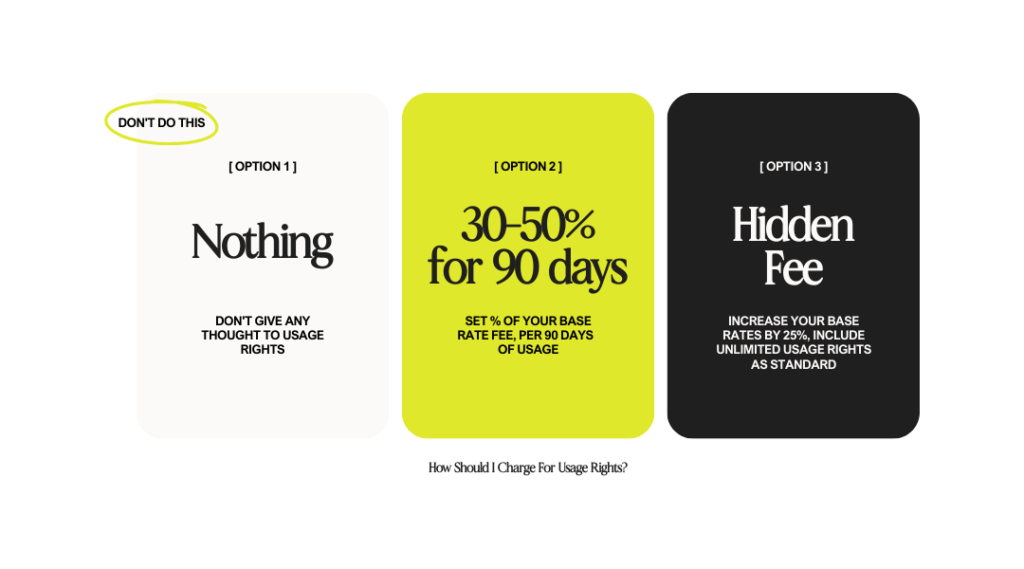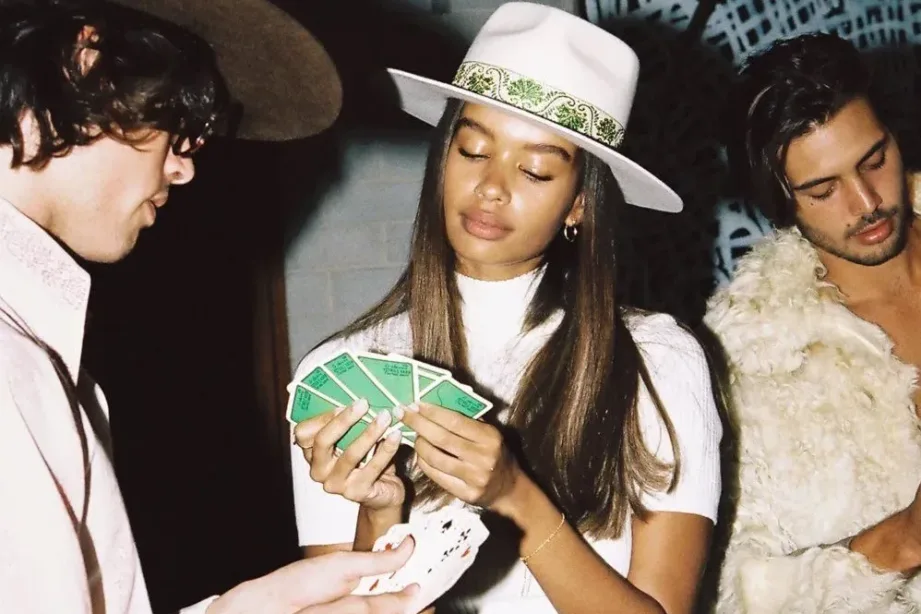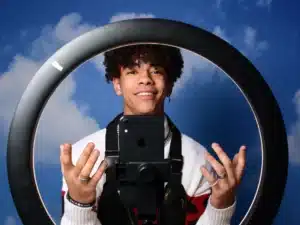There’s a lot of noise in the UGC community about usage rights. A lot. And most of it is misleading.
Put simply, usage rights give brands the permission they need to use your content in a certain way, for a certain length of time. They don’t own your content (even if they’ve paid for it) so If they want to run an ad using it, fire it onto their TikTok feed or slap your face on a landing page, you need to give them the rights to do that.
It’s completely up to you, as the creator, whether or not you do that for free.
You can charge for them or choose not to, but one thing you can’t do is bury your head in the sand. It’s time to get clued up on all things usage.
So, if you’ve ever wondered “what are usage rights?” or more importantly “what should I charge for usage rights?” — this is the post for you.
What Are Usage Rights?
Repeat after me, ‘I retain ownership of my work’. This means brands need permission.
Usage is just the way that a brand is allowed to use your content.
The most common forms are organic social, paid usage, digital usage and offline. When we’re talking about UGC usage, we’re generally talking about organic and paid social.
To ensure transparency, brands need to disclose their intentions regarding content usage and specify the duration of the ad. Once you’ve agreed, you’ll outline these rights in your UGC contract in a really clear and succinct way.
How To Charge For Usage Rights
Depending on which UGC coach or creator you listen to, you’ll often hear of three really distinct approaches to charging for usage rights. There are no wrong answers, but you need to be comfortable with the route you go down.
I like to define them as follows:

Head In The Sand
Usage rights can feel tough to get your head around initially. They are a foreign concept, they involve selling and for many creators it can feel like broaching the subject risks losing a deal that’s already set in stone. Because of this, you bury your head in the sand. We’re not going to do that anymore.
The 90-Day-er
This is the approach that most UGC creators take, or at least the ones that are making content. When brands commission content, you’ll include 90 days usage rights as standard to test out the ads, run it on different platforms, test audiences and captions etc. At 90 days,
if they want to continue using the ad ( which would mean it’s likely performing well) there is a renewal contract. This renewal rate might sit at 15-30% of the original content fee per month after the 90 days, or 50% for another 90 days. For organic posts, we are not going to charge usage rights. That’s just criminal.
The Hidden Fee
This is my go-to approach. As far as the brand is concerned, I do not charge an additional rate for usage rights. When I decided to take a step back from doing so, I increased my base rate by 15%. Why? Because I didn’t like the conversation I had to have with brands to include an extra rate for UGC.
In UGC, creators are being paid to create the content solely for brand use — you don’t have an audience. If the brand can use the video they paid for, what’s the point in paying for the videos in the first place?
I don’t like burning bridges before I’ve crossed them and this makes everything frictionless on the brand side. They don’t need to track usage rights or expirations, there are no contract renewals to deal with, so they are more likely to come back to me for their next campaign.
I include twelve months as standard in the contract, but I have no excel document with my dates to keep tabs on. And honestly, I’m fine with that.
However, and, it’s a big however. Brands cannot use my content in perpetuity. I specify that the content cannot be modified or used to create derivative works of. This is usage in perpetuity, and it’s a no-go.

Warning: Usage In Perpetuity
UGC in perpetuity may look something like this:
“Brand may use and amplify published content, as well as any derivative works, on brand’s website or any of brand’s digital channels, including their newsletter. All content shared by brand will be in connection with this program and will include attribution to Influencer in the form of a ‘@username’ tag via a social platform. Duration: Perpetual. You hereby grant us and the corresponding sponsor of the campaign a non-exclusive, worldwide, gratuitous, fully paid, perpetual, irrevocable usage and copyrights, with the right to assign and sublicense, license to copy, display, upload, distribute, store, modify, create derivative works of, and otherwise use and exploit the content that you publish through the platform.”
BIG NO. If you see the word “perpetuity” or “in perpetuity” in a contract it implies that they want to use the content you create FOREVER. And, as they please.
Post it to their social media and run it as an ad. Place it on their website, a billboard, print ad. If they want, they could resell it.
You get the idea.
And they have the legal right to do so.
Get Clued Up On Usage
Usage rights are a must when it comes to protecting your content as a UGC creator. Whether you charge for them or don’t, understanding the implications and covering yourself within your contract will save you a lot of stress later down the line. Don’t get caught out.










